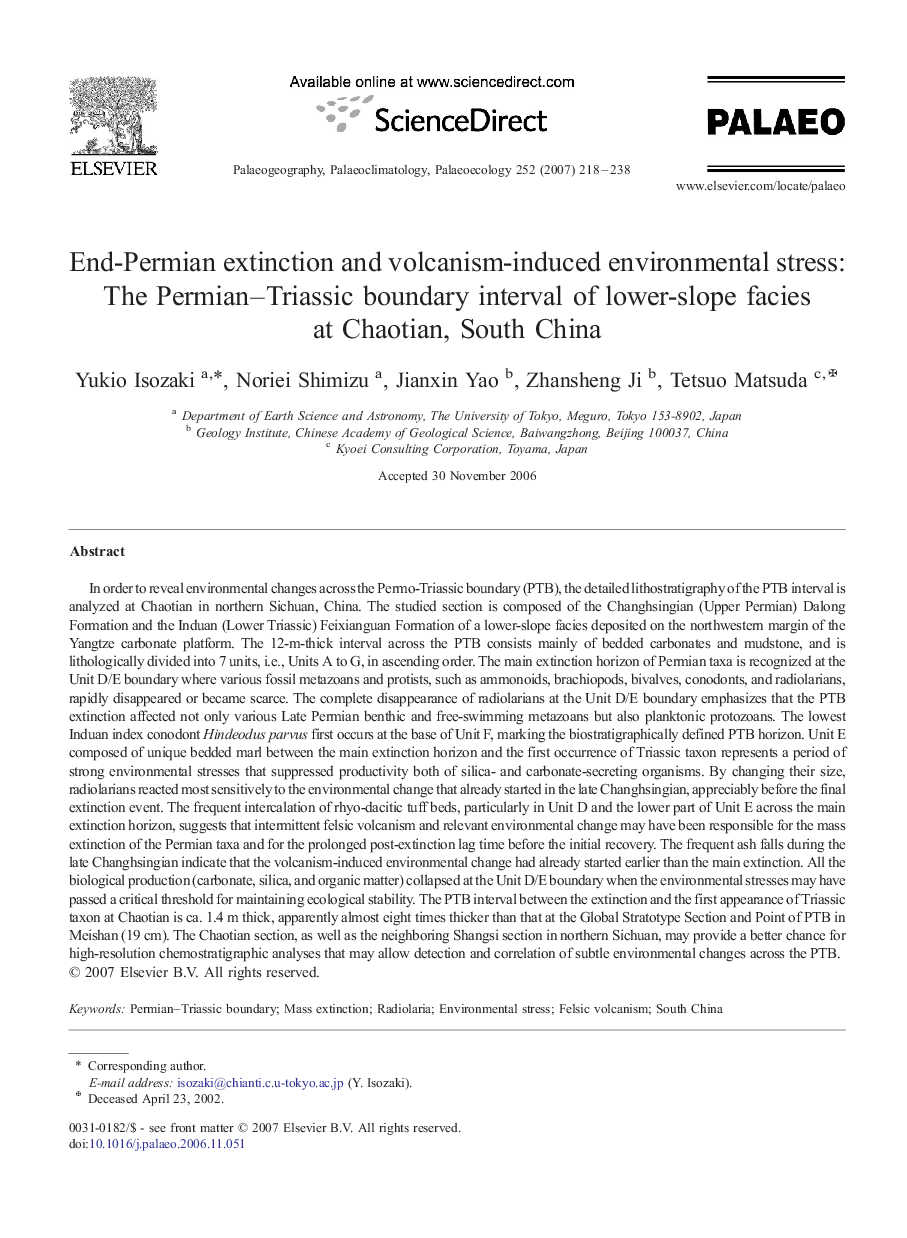| کد مقاله | کد نشریه | سال انتشار | مقاله انگلیسی | نسخه تمام متن |
|---|---|---|---|---|
| 4468825 | 1622347 | 2007 | 21 صفحه PDF | دانلود رایگان |

In order to reveal environmental changes across the Permo-Triassic boundary (PTB), the detailed lithostratigraphy of the PTB interval is analyzed at Chaotian in northern Sichuan, China. The studied section is composed of the Changhsingian (Upper Permian) Dalong Formation and the Induan (Lower Triassic) Feixianguan Formation of a lower-slope facies deposited on the northwestern margin of the Yangtze carbonate platform. The 12-m-thick interval across the PTB consists mainly of bedded carbonates and mudstone, and is lithologically divided into 7 units, i.e., Units A to G, in ascending order. The main extinction horizon of Permian taxa is recognized at the Unit D/E boundary where various fossil metazoans and protists, such as ammonoids, brachiopods, bivalves, conodonts, and radiolarians, rapidly disappeared or became scarce. The complete disappearance of radiolarians at the Unit D/E boundary emphasizes that the PTB extinction affected not only various Late Permian benthic and free-swimming metazoans but also planktonic protozoans. The lowest Induan index conodont Hindeodus parvus first occurs at the base of Unit F, marking the biostratigraphically defined PTB horizon. Unit E composed of unique bedded marl between the main extinction horizon and the first occurrence of Triassic taxon represents a period of strong environmental stresses that suppressed productivity both of silica- and carbonate-secreting organisms. By changing their size, radiolarians reacted most sensitively to the environmental change that already started in the late Changhsingian, appreciably before the final extinction event. The frequent intercalation of rhyo-dacitic tuff beds, particularly in Unit D and the lower part of Unit E across the main extinction horizon, suggests that intermittent felsic volcanism and relevant environmental change may have been responsible for the mass extinction of the Permian taxa and for the prolonged post-extinction lag time before the initial recovery. The frequent ash falls during the late Changhsingian indicate that the volcanism-induced environmental change had already started earlier than the main extinction. All the biological production (carbonate, silica, and organic matter) collapsed at the Unit D/E boundary when the environmental stresses may have passed a critical threshold for maintaining ecological stability. The PTB interval between the extinction and the first appearance of Triassic taxon at Chaotian is ca. 1.4 m thick, apparently almost eight times thicker than that at the Global Stratotype Section and Point of PTB in Meishan (19 cm). The Chaotian section, as well as the neighboring Shangsi section in northern Sichuan, may provide a better chance for high-resolution chemostratigraphic analyses that may allow detection and correlation of subtle environmental changes across the PTB.
Journal: Palaeogeography, Palaeoclimatology, Palaeoecology - Volume 252, Issues 1–2, 20 August 2007, Pages 218–238